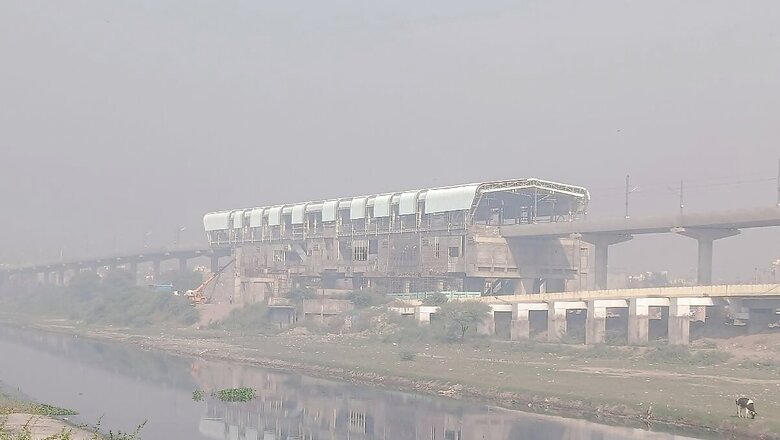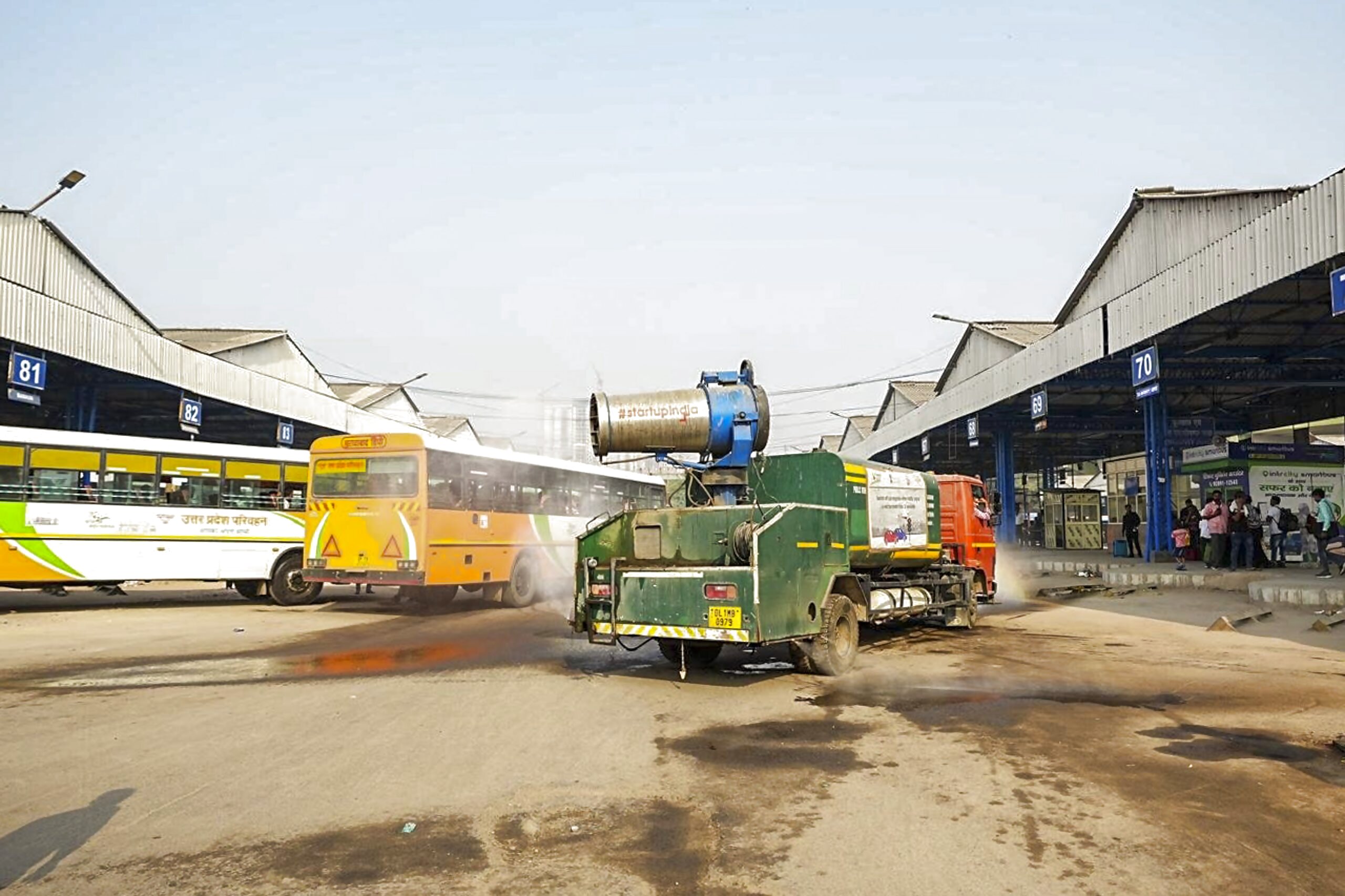
views
A thick blanket of smog has engulfed Delhi over the past few days, with stubble burning and drop in temperature pushing its air quality into the ‘poor’ or ‘very poor’ category. The question on Delhiites’ mind is — will this Diwali (October 31) be any different in terms of air quality?
The combination of winter, geographical location and stubble burning has been choking the city for almost a decade. Moreover, low wind speeds, dropping temperatures, high moisture levels and the presence of pollutants that act as surfaces for condensation drive Delhi’s air pollution to severe levels every winter.
As per the Central Pollution Control Board (CPCB) data on Diwali days, Delhi recorded an Air Quality Index (AQI) of 218 in 2023, 312 in 2022, 382 in 2021, 414 in 2020, 337 in 2019, 281 in 2018, 319 in 2017, and 431 in 2016.
An AQI between 0 and 50 is considered ‘good’, 51 and 100 ‘satisfactory’, 101 and 200 ‘moderate’, 201 and 300 ‘poor’, 301 and 400 ‘very poor’, 401 and 450 ‘severe’ and above 450 ‘severe plus’.
STUBBLE BURNING TO PEAK AROUND DIWALI
Gufran Beig, Chair professor, National Institute of Advanced Studies (NIAS), and founder of SAFAR (System of Air Quality and Weather Forecasting And Research), said that stubble burning is likely to peak in the first week of November and the city’s air quality is likely to remain in the ‘very poor’ category on Diwali.
“From now onwards, it is going to get worse. Peak (of stubble burning) is likely to be in the first week of November. It will depend on whether the peak will be reduced or not. There are meteorological factors as well. During that period, the first week of November, if there is reduced stubble burning then pollution may come down," Beig said.
Stubble Burning The Silent KillerA thick fog engulfed the national capital as the AQI in several areas remained in the very poor category, according to the Central Pollution Control Board.What is the Way Ahead For Delhi ?#TheBreakfastClub @Sonal_MK @toyasingh @Srish__T pic.twitter.com/sfxHZ9UM5h
— News18 (@CNNnews18) October 21, 2024
Sunil Dahiya, Founder and Lead Analyst, Envirocatalysts, said that air quality would deteriorate further with the increase in farm fires in Delhi’s neighbouring states in the next two-three weeks. Dahiya, who has been tracking air quality for over a decade, however, pointed out that the AQI can be kept in check if authorities take necessary steps to control farm fires and other sources of pollution. “After October 20, we will witness an increase in stubble burning in the next two-three weeks. It will peak around Diwali, so it is very likely that it would be a very polluted Diwali this year as well if we fail to control farm fires, firecracker bursting and other sources of pollution. In the next two-three weeks, stubble burning would contribute to 40% of Delhi’s pollution," he said.
Dr R Subramanian, Sector Head – Air Quality at Center for Study of Science, Technology & Policy (CSTEP), said stubble burning in Punjab and Haryana emits a lot of particulate and gaseous pollutants, leading to pollution in Delhi. “When the meteorology favours winds blowing from Punjab/Haryana towards Delhi, these stubble burning emissions are transported towards and pass over Delhi, contributing to increased pollution in the capital city," he said.
“It is possible that as the weather gets colder, wood burning will increase in Delhi and nearby regions. Coupled with unfavourable meteorology (stagnation conditions), this could worsen air quality unless proactive measures (emission control measures taken several days in advance) are implemented," he said.

THE IMPACT OF VEHICULAR, INDUSTRIAL POLLUTION
Experts have highlighted the need to tackle local sources of air pollution in the city, rather than focusing only on stubble burning.
The SAFAR founder said that anti-pollution measures are largely focused on PM 10 which comes from dust and construction sites and not PM 2.5, which is the major pollutant that comes from vehicles.
Beig emphasised the need to control local pollution, saying even if stubble burning cases were brought down to zero, the city’s air would not be ‘good’ or ‘satisfactory’.
Dahiya highlighted that existing sources of pollution in the city have not been controlled in a comprehensive way. Vehicular emissions, power plants, industries in Ghaziabad, Sonepat and other cities in Delhi-NCR, brick kilns, biomass burning in rural areas and construction sites continue to affect Delhi-NCR’s pollution, he pointed out. “Winds are coming from Uttar Pradesh (towards Delhi) for now and not Haryana and Punjab. This shows the existing sources of pollution have not been controlled in a comprehensive way," he said.
Dahiya said that vehicular emissions contribute between 20-30% to the city’s pollution. However, he credited the government for bringing in Bharat Stage-6 norms for vehicles that has led to a reduction in pollution levels.
NO POSSIBILITY OF RAIN AROUND DIWALI
A weather expert has also ruled out the possibility of rain in the city that may bring down pollution levels. Mahesh Palawat, Vice-President Meteorology And Climate Change, Skymet Weather, said that there is no possibility of rain in the city in the next ten days around the time of Diwali.
“There is no possibility of western disturbance in the coming days. The temperature is not dropping. If it does not drop further, air quality will not change much. Pollution during Diwali will also depend on wind speed," Palawat said.

















Comments
0 comment